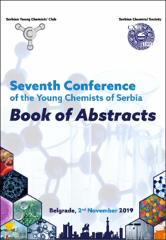Indirect photolysis of fumonisin B1 in aqueous medium

View/
Date
2019-11-02Author
Jevtić, Ivana
Jakšić, Sandra
Uzelac, Maria
Abramović, Biljana
Metadata
Show full item recordAbstract
Photochemical methods can be used for removing toxic organic pollutants in
aqueous medium. These processes also include photolysis, where oxidation occurs
through the use of UV or solar radiation, and can be in combination with some of the
compounds: hydrogen peroxide (H2O2), ammonium persulfate (NH4)2S2O8, and potassium
bromate (KBrO3). These processes are reactions of indirect photolysis. Generally, the
effectiveness of homogeneous light-driven oxidation processes is associated with very
reactive species, such as hydroxyl radicals (•OH), which can lead to complete
mineralization of pollutants. The UV/H2O2 process is able to oxidize a wide variety of
organic pollutants in aqueous solutions [1], but also the processes of persufate oxidation
are receiving increasing attention in the treatment of pollutants in water [2].
In this paper, we have investigated efficiency of indirect photolysis of fumonisin B1 (FB1)
in ultrapure water using UV and simulated solar radiation in the presence of H2O2 as well
as (NH4)2S2O8. The effect of pH on the degradation efficiency was also examined.
Degradation kinetics was monitored by high performance liquid chromatography with
fluorescence detector technique using o-phthaldialdehyde 2-mercaptoethanol for
derivatization of FB1. It was found that efficiency of degradation was the highest using
of UV radiation in the presence of 1.36 × 10 5 mol/dm3 (NH4)2S2O8 at pH ~ 4. Namely,
after 60 min of irradiation, the degradation of the FB1 was complete.
